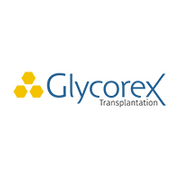The Change management - evidence based decisions session included the following presentations:
1. Barbee Whitaker: Modeling the Effect of an Individual-Risk Based Deferral Policy for Sexual Behaviors on Blood Donations in the US
2. Rachel Thorpe: Understanding preferences for advancing inclusion of trans and gender diverse people in blood donation in Australia
3. Stephen Thomas: Safety profile of plasma for fractionation donated in the United Kingdom, with respect to variant Creutzfeldt-Jakob Disease
4. Antoine Lewin: Risk of variant Creutzfeldt-Jakob Disease for the Canadian Blood Supply
5. Veronica Hoad: Is Dual Testing for hepatitis C necessary? Risk Modelling and Cost Effectiveness of removing hepatitis C antibody testing for Australian blood donors
6. Jennie Haw: Advancing inclusivity and equity for trans, nonbinary, Two-Spirit and other gender-diverse donors
MODERATORS: Eric Jansen and Marja-Kaisa Auvinen
After the presentation, there was a questions and answers session of about 5 minutes, which is also included in the recording.
Abstract
Is dual testing for Hepatitis C necessary? Risk modelling and cost effectiveness of removing Hepatitis C antibody testing for Australian blood donors
V Hoad1, Q Cheng2, A Roy Choudhury3, C Seed1, P Bentley1, V Wiseman2,4
1Donor and Product Safety Unit, Australian Red Cross Lifeblood, Melbourne, 2Kirby Institute, University of New South Wales, Sydney, 3Medical School, University of Western Australia, Perth, Australia, 4Department of Global Health and Development, London School of Hygiene and Tropical Medicine, London, United Kingdom
Background: Parallel testing of blood donations for hepatitis C virus (HCV) antibody and HCV RNA by Nucleic Acid Testing (NAT) has been standard practice in Australia since 2000. Meanwhile, NAT technologies have improved, and HCV has become a curable disease. This has resulted in a significant reduction in the risk and clinical consequences of HCV transfusion-transmission.
Aims: This study aimed to estimate the residual risk under various testing options, conduct a cost-effectiveness analysis and complete a risk assessment to determine the optimal testing strategy.
Methods: A deterministic risk model was used to calculate the residual risk of HCV transmission for four testing strategies. A low, mid and high estimate of the residual risk was calculated for each. The testing strategies modelled were as follows: universal dual testing targeted dual testing for higher risk groups (first-time donors or transfusible component donations) and universal NAT-only. A decision-analytic model was developed to assess the cost-effectiveness of alternative HCV testing strategies.
Results: The mid estimate of the residual risk was 1 in 151 million for universal dual testing, 1 in 111 million for targeted dual testing of first-time donors, 1 in 151 million for targeted dual testing for transfusible component donations, and 1 in 66 million for universal NAT-only. Universal testing with NAT only was the most cost-effective strategy due to the lowest testing cost and the number of transfusion-transmitted cases approximating zero with all testing strategies.
Summary/Conclusions: Antibody testing in addition to NAT does not materially change the risk profile. Even conservative estimates for the cessation of anti-HCV predicts an HCV transmission risk substantially below 1 in 1 million. Therefore, given it is not contributing to blood safety in Australia but consuming resources, anti-HCV can safely be discontinued.















